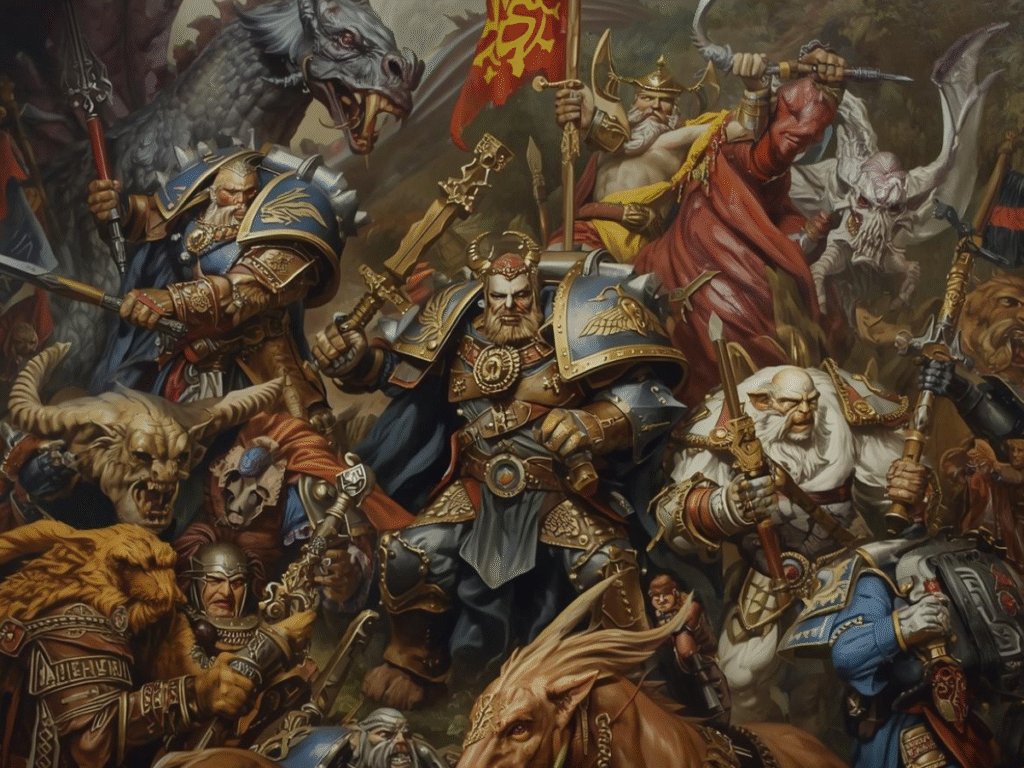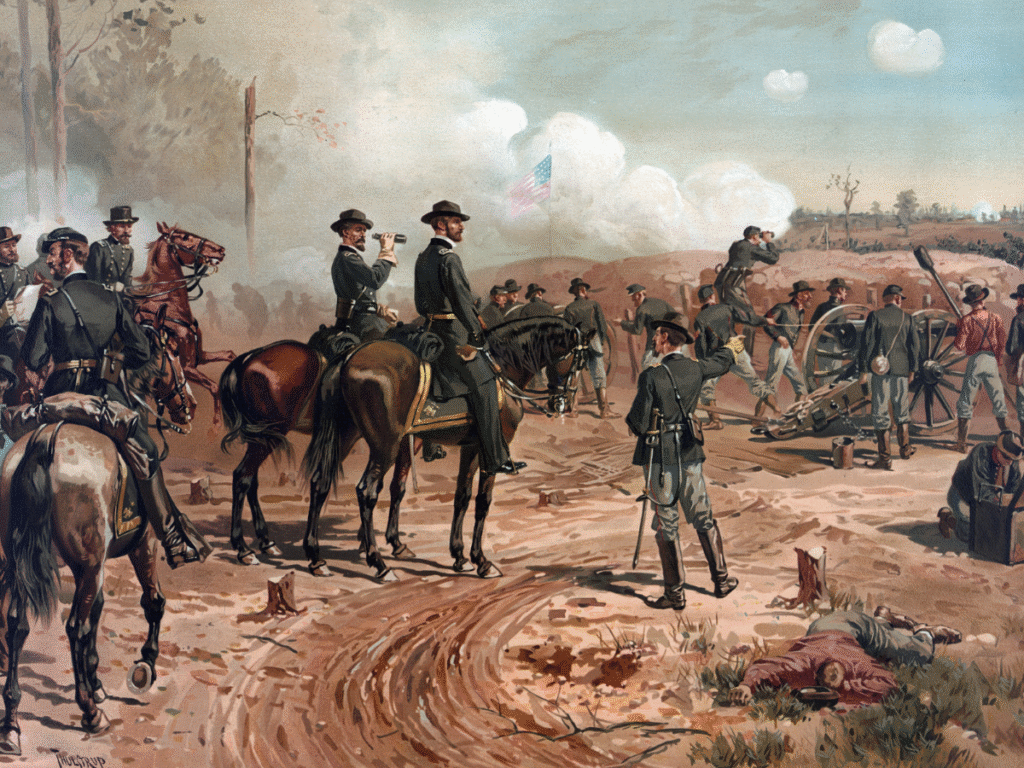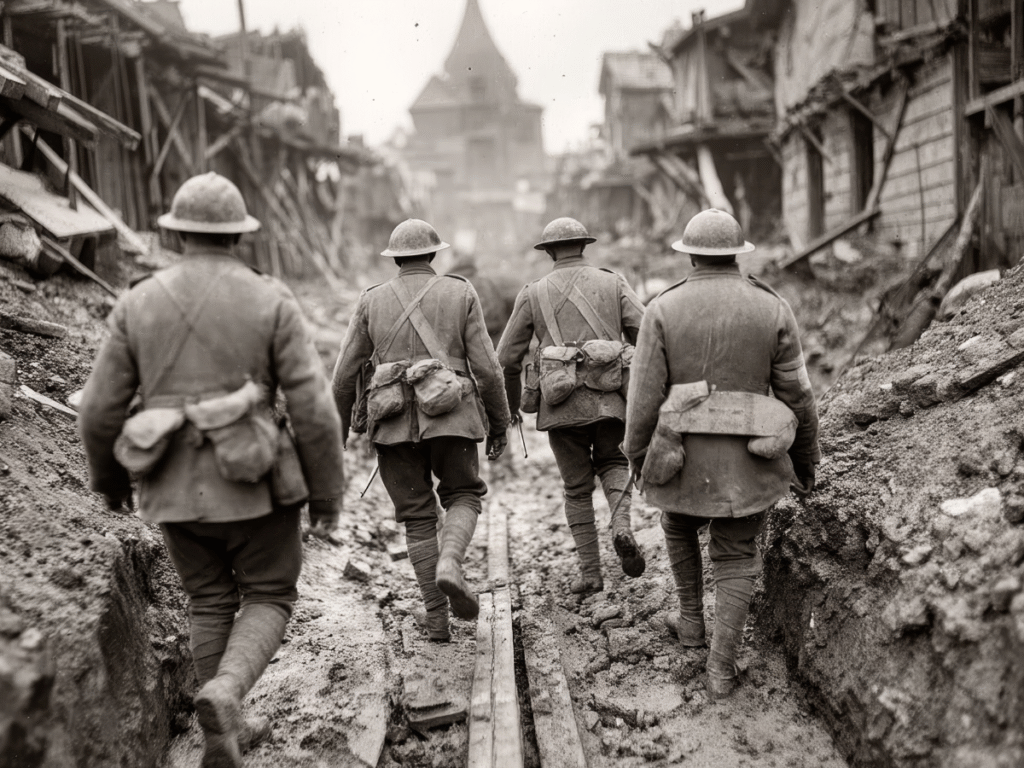Tabletop wargaming offers an exciting blend of strategy, tactics, and social interaction that has captivated hobbyists for decades. Whether you’re drawn to the grim darkness of the far future or the historical battles of the Napoleonic Wars or World War II, understanding the rules is your gateway to enjoying this rewarding hobby. While rulebooks might seem intimidating at first, mastering tabletop wargame rules is entirely achievable with the right approach and mindset.
In this comprehensive guide, we’ll walk you through everything you need to know about tabletop wargame rules—from the fundamental concepts to advanced strategies for mastering complex systems. By the end, you’ll have the confidence to set up your first game and start your journey toward becoming a skilled commander.
Understanding the Basics of Tabletop Wargame Rules
Before diving into specific game systems, it’s essential to understand the common elements that most tabletop wargames share. These foundational concepts will help you navigate any rulebook you encounter.
Core Components: Dice, Measurements, and Turn Structure
Most tabletop wargame rules rely on three fundamental components:
- Dice: Used to introduce randomness and simulate the unpredictability of combat. Common types include six-sided dice (D6), ten-sided dice (D10), and twenty-sided dice (D20). Some games use standard dice, while others employ custom dice with symbols. Sometimes, cards are introduced to create randomness within game systems.
- Measurements: Distance on the tabletop matters! Games typically use inches or centimeters to measure movement, weapon ranges, and area effects. You’ll need a tape measure or ruler to play most tabletop wargames.
- Turn Structure: Wargames alternate between players, with each turn divided into phases like movement, shooting, and close combat. Understanding the sequence of play is crucial for planning your strategy.
Common Terminology Every Beginner Should Know
Wargaming has its own vocabulary. Here are essential terms you’ll encounter:
- Line of Sight (LOS): Whether one unit can see another, determining if it can shoot at it or charge
- Cover: Terrain or obstacles that provide protection, usually making units harder to hit
- To Hit Roll: A dice roll determining whether an attack successfully strikes its target
- To Wound Roll: A dice roll determining whether a successful hit causes damage
- Save Roll: A dice roll allowing a unit to avoid damage from a successful wound
- Morale: A system representing a unit’s willingness to fight, often tested after taking casualties
How to Read and Interpret a Rulebook Effectively
Rulebooks can be daunting, often running hundreds of pages. Here’s how to approach them:
- Start with the quick-start or introduction section: Most rulebooks include a simplified overview or starter scenario
- Focus on core rules first: Don’t try to memorize everything at once. Learn movement, shooting, and combat basics before tackling advanced rules
- Use the index and table of contents: These are your best friends for finding specific rules during gameplay
- Read example scenarios: Many rulebooks include illustrated examples that clarify complex concepts
- Don’t worry about perfection: It’s okay to miss rules during your first few games. Learning is a gradual process
Key Types of Tabletop Wargame Rules
Let’s explore the major rule categories that govern tabletop wargaming.
Movement Rules: How Units Traverse the Battlefield
Movement rules determine how your forces maneuver across the tabletop. Key concepts include:
- Movement characteristics: Each unit has a movement value (e.g., 6″ or 12cm) indicating how far it can travel in a turn
- Terrain effects: Difficult terrain like forests or ruins may slow movement or require special rules
- Formation and coherency: Units often must maintain specific distances between models to stay organized
- Charging and advancing: Special movement types that bring units into combat or allow them to move after shooting
Understanding movement is crucial because positioning determines your tactical options for shooting and combat.
Combat Mechanics: Shooting, Melee, and Resolving Attacks
Combat is the heart of wargaming. Here’s how it typically works:
Typical Shooting Phase:
- Check if the target is within weapon range and line of sight
- Roll dice to determine how many shots hit (to hit roll)
- Roll to see if hits cause wounds (to wound roll)
- Opponent rolls saves to potentially negate wounds
- Apply damage to the target unit
Typical Melee/Close Combat Phase:
- Units in contact with enemies fight in close combat
- Similar roll sequence to shooting: to hit, to wound, and save rolls
- May include additional mechanics like striking in initiative order or special combat abilities
Combat mechanics vary significantly between game systems, but most follow this basic structure of rolling to hit, wound, and save.
Morale and Leadership Systems
Morale rules simulate the psychological impact of warfare. When units take casualties or witness traumatic events, they may need to test their morale. Failing a morale test can result in:
- Additional casualties as soldiers flee
- Restrictions on the unit’s actions
- Complete removal of the unit from the battlefield
Leadership values represent a unit’s discipline and courage, affecting morale test outcomes. Elite units typically have high leadership, while inexperienced troops have lower values.
Special Abilities and Unit-Specific Rules
What makes wargaming truly engaging is the variety of special abilities that differentiate units:
- Universal special rules: Abilities like “stealth” or “fearless” that appear across multiple units
- Faction-specific rules: Unique mechanics representing different armies’ fighting styles
- Unit-specific abilities: Special rules that make certain units distinctive and tactically interesting
These special rules add depth and flavor to the game, rewarding players who understand their army’s unique capabilities. These are factors can play a vital part in creating the ‘flavor’ of the game – be it a historical game or a fantasy game.
Popular Tabletop Wargame Rules Systems
The wargaming hobby offers numerous rule systems, each with its own approach to gameplay. Let’s explore some popular options.

Fantasy Wargaming
Warhammer 40,000 and Age of Sigmar
Games Workshop’s flagship products are perhaps the most recognizable tabletop wargames:
Warhammer 40,000: Set in a dark science fiction universe, this game features large-scale battles with detailed rules for different army factions. The current edition emphasizes streamlined gameplay while maintaining tactical depth. Games typically involve 25-100+ models per side and take 2-3 hours.
Age of Sigmar: The fantasy counterpart to 40K, featuring epic battles between gods, monsters, and mortal armies. The rules are generally more accessible than 40K, making it beginner-friendly while still offering strategic complexity.
Both systems feature extensive model ranges, active competitive scenes, and regular updates through FAQs and balance patches.
Historical Wargaming Rules

Historical Wargaming
For those interested in real-world conflicts, historical wargaming offers rich experiences:
Bolt Action: Focuses on World War II combat with intuitive rules that capture the flavor of the conflict without overwhelming complexity. The order dice system creates uncertainty and forces players to adapt their plans dynamically.
Other popular historical systems include:
- Flames of War: 15mm scale WWII combat with detailed army lists
- Black Powder: Horse and musket era warfare with emphasis on command and control
- SAGA: Dark Ages skirmish gaming with unique faction mechanics
Other honorable mentions include the free wargame rules, Valour & Fortitude from Perry Miniatures, Eagles to Glory, and Blucher. Historical games often prioritize realism and historical accuracy, appealing to history enthusiasts and modelers alike.
Skirmish Games with Simplified Rule Sets

Skirmish Games
Skirmish games focus on smaller forces, often just a handful of models per side. These games are perfect for beginners because:
- Lower model count means less investment in time and money
- Simpler rules are easier to learn
- Games play faster, often under an hour
- Each model matters, creating narrative moments
Popular skirmish systems include:
- Kill Team: Small-scale 40K combat focusing on individual operatives
- Frostgrave: Fantasy wizards and warbands exploring frozen ruins
- Infinity: Sci-fi skirmish with dynamic reactive gameplay
- Marvel Crisis Protocol: Superhero battles with cinematic action
Choosing the Right System for Your Interests
When selecting a wargame system, consider:
- Setting preference: Do you prefer sci-fi, fantasy, or historical settings?
- Complexity level: Are you comfortable with detailed rules or prefer streamlined gameplay?
- Time commitment: How long do you want games to last?
- Local community: What games do players in your area play?
- Model aesthetics: Which miniatures appeal to you visually?
- Budget: Some systems require significant investment in models and books
Don’t be afraid to try multiple systems. Many wargamers enjoy several different games, each offering unique experiences.
Learning and Mastering Tabletop Wargame Rules
Understanding how to learn efficiently will accelerate your journey from newcomer to confident player.
Step-by-Step Approach to Learning New Rules
Follow this proven method for tackling new rule systems:
- Step 1: Watch introductory videos or read quick-start guides to get an overview
- Step 2: Read the core rules section of the rulebook, focusing on turn structure
- Step 3: Learn movement rules and practice moving units on the table
- Step 4: Add shooting mechanics, running through example combats
- Step 5: Incorporate melee combat rules
- Step 6: Learn morale and special rules as they come up during play
- Step 7: Play your first complete game, referencing the rulebook as needed
- Step 8: Review what you learned and identify areas to study further
This incremental approach prevents information overload and builds confidence gradually.
Playing Tutorial Games and Small-Scale Battles
Start small to build your skills:
- Combat patrols or starter sets: Many games offer small-force scenarios perfect for learning
- Single unit types: Begin with just infantry or basic troops before adding vehicles and special units
- Scenario-based learning: Use scenarios that introduce one new concept at a time
- Solo play: Control both sides to practice rules without pressure
Small games let you focus on understanding mechanics rather than managing dozens of units. As you gain confidence, gradually scale up to larger battles.
Using Quick Reference Sheets (QRS) and Player Aids
Don’t rely solely on the rulebook during games:
- Official quick reference sheets: Many games include condensed rule summaries in a one or two page format
- Community-created player aids: Online communities often produce excellent reference materials
- Unit cards and army lists: Keep your force’s statistics handy
- Phase sequence reminders: A simple chart showing turn order prevents skipped steps
- Digital tools and apps: Some games have official or unofficial apps with rules references
Having the right reference materials at your fingertips keeps games flowing smoothly and reduces rulebook consultation time.
Common Beginner Mistakes and How to Avoid Them
Learn from others’ experiences by avoiding these pitfalls:
- Trying to memorize everything: It’s impossible to know every rule immediately. Focus on core mechanics and look up edge cases as needed
- Playing with incomplete rules: Skipping important rules like morale or terrain effects can unbalance games. Even if you forget something, acknowledge it and apply it going forward
- Not measuring carefully: Precise measurement matters in wargaming. Use proper tools and measure from the correct points
- Ignoring line of sight: Always verify your units can actually see their targets before shooting
- Forgetting to declare actions: Announce your intentions clearly before rolling dice to avoid confusion
- Taking rules disputes personally: Disagreements happen. Resolve them calmly, perhaps with a dice roll, and look up the correct rule afterward
- Rushing through phases: Take your time during each phase to consider all options
Remember that everyone makes mistakes while learning. Be patient with yourself and your opponents.
House Rules and Rule Modifications
Once you’re familiar with a game system, you might consider customizing it to better suit your preferences.
When and Why to Consider House Rules
House rules are custom modifications to published rules. Consider them when:
- A rule consistently produces unfun or unbalanced results
- Your gaming group wants to emphasize certain aspects (narrative vs. competitive)
- You’re adapting rules for different scenarios or campaigns
- Published rules contain ambiguities or gaps
- You want to simplify overly complex mechanics
However, be cautious about house rules. The published rules were usually playtested extensively, and changing them can have unintended consequences.
Balancing Custom Modifications with Core Gameplay
If you decide to implement house rules:
- Start small: Modify one rule at a time and test it thoroughly
- Document changes: Write down house rules clearly so everyone understands them
- Test before committing: Try house rules in friendly games before using them in campaigns or tournaments
- Be willing to revert: If a house rule creates problems, return to the official rules
- Consider game balance: Ensure modifications don’t give unfair advantages to certain armies or play styles
Getting Your Gaming Group on Board with Changes
House rules require consensus:
- Discuss proposed changes with your gaming group before implementing them
- Explain the reasoning behind modifications
- Be open to feedback and alternative solutions
- Allow players to veto changes that would negatively affect their armies
- Establish a trial period for new house rules
Remember that the goal is enhancing everyone’s enjoyment, not imposing your preferences on others.
Resources for Deepening Your Understanding
Take advantage of the wealth of resources available to wargamers.
Online Communities and Forums for Rule Clarifications
The wargaming community is generally welcoming and helpful:
- Reddit: Subreddits for specific games (r/Warhammer40k, r/boltaction, etc.) offer advice and rule discussions
- Facebook groups: Active communities for most major game systems
- Dedicated forums: Games like Warhammer have extensive forum communities (The Bolter and Chainsword, DakkaDakka)
- Discord servers: Real-time chat with other players for quick rule clarifications
When asking for help, be specific about your question and reference the relevant rule section.
Video Tutorials and Battle Reports
Visual learning is incredibly effective for tabletop gaming:
- Official tutorial videos: Many game companies produce learning content
- YouTube channels: Content creators like Tabletop Tactics, Winters SEO, and Guerrilla Miniature Games offer excellent battle reports and tutorials
- Twitch streams: Watch live games and ask questions in chat
- Painting and hobby channels: While focused on modeling, these often include rules discussions
Battle reports are particularly valuable because they show rules in action and demonstrate tactical concepts.
Official FAQs and Errata Documents
Game publishers regularly update their rules:
- FAQs (Frequently Asked Questions): Clarify confusing rules and answer common questions
- Errata: Correct mistakes or typos in the published rules
- Balance updates: Adjust rules to improve competitive balance
- Designer’s commentary: Insight into the intent behind certain rules
Always check for the latest FAQ and errata for your game system. These documents are usually free downloads from the publisher’s website.
Local Gaming Clubs and Experienced Players
Nothing beats learning in person:
- Local game stores: Many host regular gaming nights and welcome newcomers
- Gaming clubs: Organized groups that meet regularly to play
- Convention demo games: Try before you buy at gaming conventions
- Mentorship: Experienced players are usually happy to teach newcomers
Face-to-face interaction allows for immediate feedback and hands-on learning that can’t be replicated through books or videos alone.
Conclusion
Mastering tabletop wargame rules is a journey that combines learning, practice, and engagement with a vibrant community. While rulebooks may seem intimidating initially, breaking the learning process into manageable steps makes even complex systems accessible.
Remember these key takeaways:
- Start with core rules and gradually expand your knowledge
- Use reference materials and player aids to support your learning
- Play small games before scaling up to full-sized battles
- Don’t be afraid to make mistakes—they’re part of the learning process
- Engage with the community for support, clarifications, and inspiration
- Choose a game system that matches your interests and local gaming scene
The most important thing is to get models on the table and start playing. Each game will deepen your understanding and reveal new tactical possibilities. The wargaming community is welcoming to newcomers, so don’t hesitate to reach out for help or join a local gaming group.
Whether you’re commanding futuristic armies across alien worlds, leading historical forces through pivotal battles, or guiding small warbands through skirmishes, understanding the rules unlocks the full strategic potential of tabletop wargaming. The journey from uncertain beginner to confident commander is rewarding, filled with memorable games, painted miniatures, and lasting friendships.
Now it’s time to gather your forces, set up the battlefield, and enjoy the rich experience that tabletop wargaming offers. May your dice roll true and your tactics prove sound!
What You Might Want to Read Next
Exploring Late Medieval Wargames: First Impressions of Furioso and Its Rules
Another Eagles to Glory After Action Report


